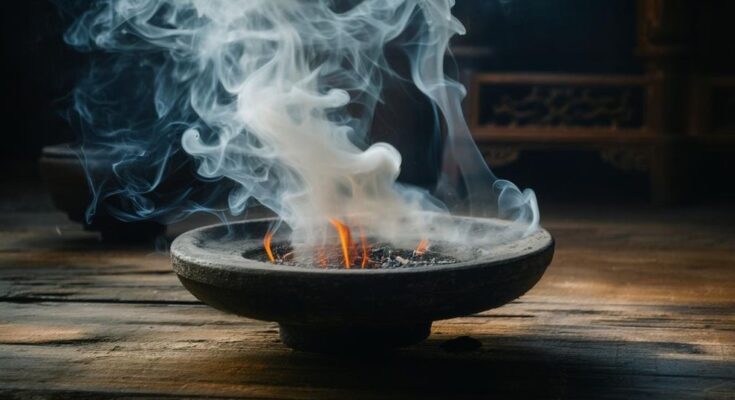New research reveals the health dangers of burning incense, particularly for individuals with asthma or allergies. An 87-year-old woman’s breathing issues were linked to daily incense usage, improving after switching to electric alternatives. Incense can produce significantly more particulate matter than cigarettes, release harmful chemicals, and pose risks to those exposed to second-hand smoke. Doctors recommend safer alternatives and better ventilation to reduce health impacts.
Recent research highlights the potential health threats of burning incense, particularly for individuals with asthma or allergies. An 87-year-old woman experienced unexplained shortness of breath attributed to daily incense use. After substituting with electric incense devices, her symptoms significantly improved, showcasing the health implications of traditional burning methods. Incense products, prevalent in various cultural practices, can release harmful substances into the air, greatly exceeding the particulate matter produced by cigarettes. Incense burning can introduce pollutants such as carbon, sulfur, and formaldehyde into indoor environments. Study author Gomeo Lam notes that the woman initially resisted stopping her incense practice due to its cultural significance. However, the health risks, including respiratory issues and potential carcinogenic exposure, ultimately warranted a change, demonstrating the delicate balance between tradition and health. Researchers stress that incense fumes can pose severe risks not just for the user, but also for those exposed to second-hand smoke, particularly vulnerable populations like children. Dr. Mary Lee-Wong warns that the effects of incense smoke are akin to tobacco smoke and can linger, creating prolonged exposure even after the source is removed. The team advocates addressing these implications while recognizing the cultural importance of incense burning in patient interactions. Beyond its direct health impacts, incense contributes to air pollution and poses fire hazards, leading the research team to suggest alternatives. They recommend switching to electric incense devices or improving ventilation, emphasizing the need for health practitioners to sensitively navigate patient beliefs while addressing these substantial risks.
The use of incense is deeply woven into various religious and cultural practices, often creating an aromatic atmosphere of reverence and tranquility. However, recent findings have shed light on the potential hazards associated with this seemingly benign ritual. With incense burning generating considerable particulate matter and toxic compounds, it poses significant health threats, especially to vulnerable groups. Understanding these dangers can aid in promoting safer practices while respecting cultural traditions.
The research presented underlines a critical intersection of health and tradition, highlighting the need for awareness of incense’s health risks. While offering a means of cultural expression, incense burning can lead to serious respiratory issues and contribute to indoor air pollution. Adopting electric alternatives and promoting better ventilation can help mitigate these risks without sacrificing cultural practices, ensuring health is prioritized.
Original Source: www.gjsentinel.com



